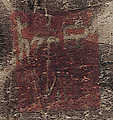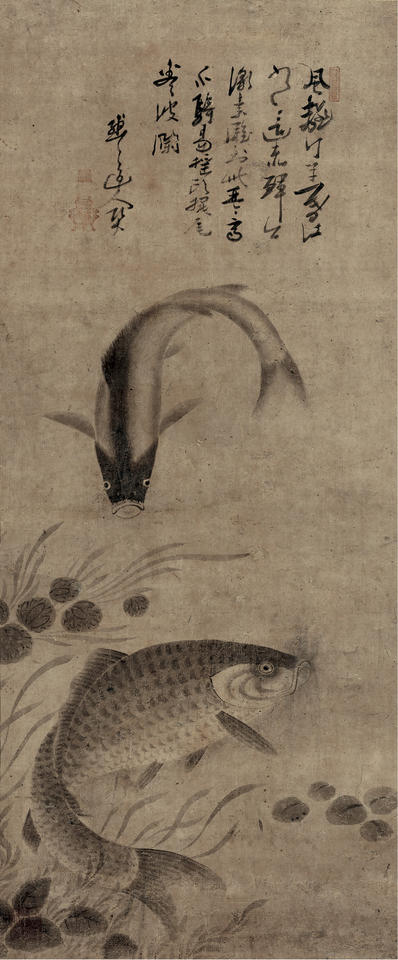Artist
Yōgetsu
(楊月; fl. late 15th century)
Catalogue information
Muromachi period, late 15th century
Hanging scroll; ink on paper
84.9 x 35.4 cm (33 3/8 x 13 7/8 in.)
Literature
See also
- Japanese paintings » Ink Painting of the Muromachi and Momoyama Periods
- Hanging scrolls
- Works of the Muromachi period
This artwork was published as catalogue entry 120 in Volume I of Art through a Lifetime.
Additional details




Text
by Mokumoku Dōjin
Isle grasses fluttering in the wind, a chilly river at dusk, / a shaft of red glow cast on the whitish bank. / Were Qingao
[active ca. 300 B.C.E.] here, he would not ride a crane, / but would have his mount shake its head and wag its tail to make waves.
Seals
Shoga tōitsu
; Kin
[illegible]; Taikyo
; Shinsō Yōgetsu
Supplementary Transcriptions
Text
風翻汀草暮江寒﹐
一道赤輝上激素灘。
到此琴高不騎曷﹐1
搖頭擺尾卷波瀾。2
默默道人賛
Seals
金□(白文方印)(intaglio, square)
泰虛(朱文器形印)(relief, vessel shape)
臣僧楊月(白文方印)(intaglio, square)
書畫統一(白文長方印)(intaglio, rectangle)
Notes
1. The character he 曷is unintelligible in this context. The artist might mean he 鶴 (crane) because the two characters are homonymic except for the tone.
2. Qingao was a skilled player of the qin-zither from the Zhao 趙state during the Warring States period (475-221 B.C.E.) and served as a musician at the court of King Kang of the Song state 宋康王 (r. 329-286 B.C.E.). He became a mythological figure who attained the secret of immortality. It is said that, after moving around Jizhou (region around modern Jizhou, Hebei Province) and Zhuojun (modern Zhuozhou, Hebei Province) for over two hundred years, he dived into the Zhuo River, emerged riding a red carp, and, after staying on land for a month, disappeared into water again. See Stories of the Immortals (《列仙傳》), attributed to Liu Xiang 劉向 (ca. 77-ca. 6 B.C.E.), Part 1, Wenyuan Ge Siku Quanshu neilianwang digital ed. (Hong Kong: Dizhi wenhua chuban youxian gongxi, 2005), http://skqs.nlic.net.cn:8000/scripts/skinet, n.p.

